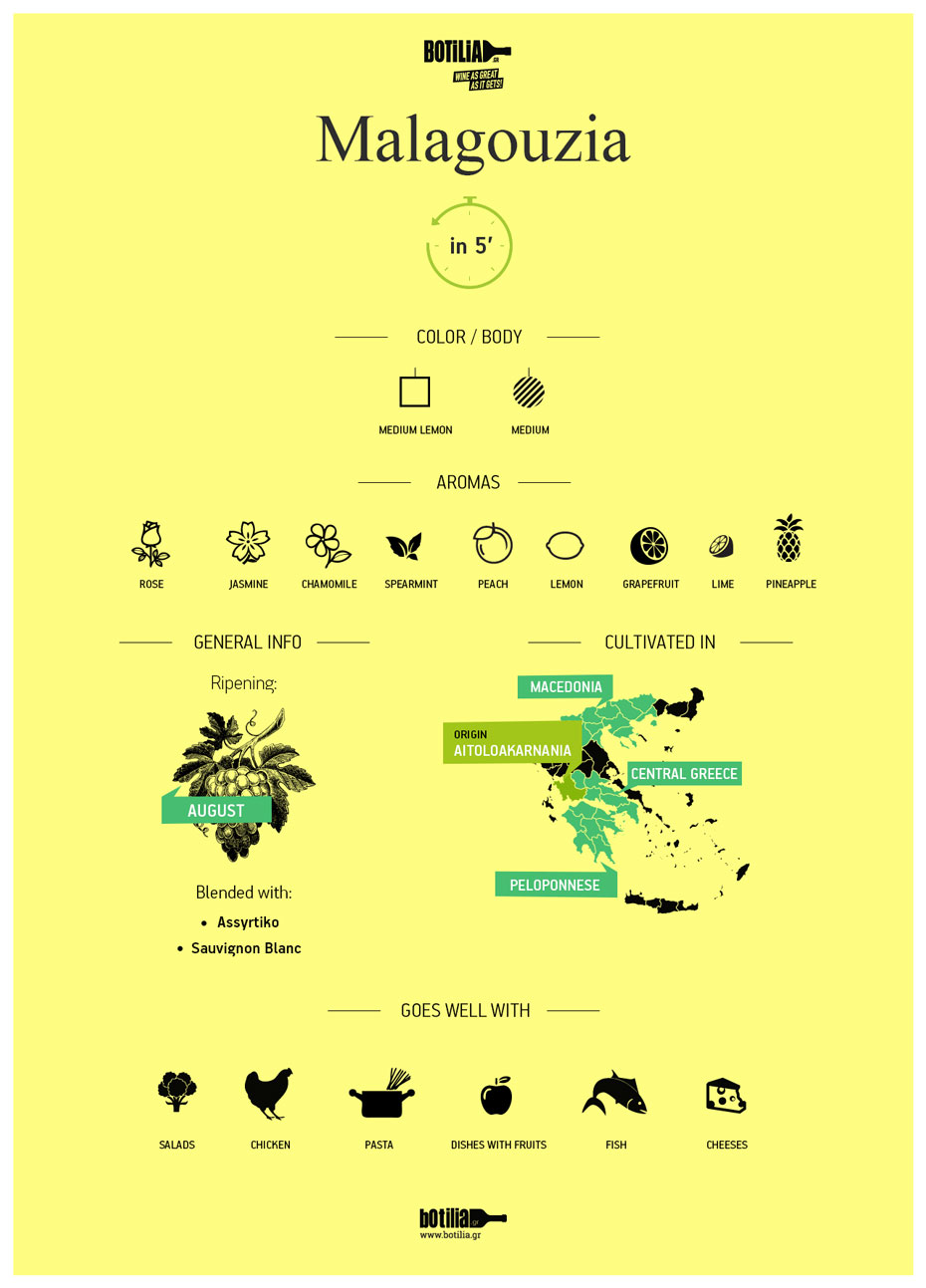MALAGOUZIA IN 5'!

Malagouzia is the variety that came close to extinction and is now at the top of the Greek vineyard. For this reason, I like to call her "Cinderella of Greek wine"! Her adaptation to different climates and her diversity leave no choice but to be loved by producers and wine lovers! How can you not love this variety?
General info
Malagouzia ripens in August and it's sensitive to botrytis. It can give exceptional single varietal wines it also can be blended with Assyrtiko or Sauvignon blanc. Lately many are marrying it to Chardonnay or even Viognier. It also offers wines of different styles, from dry to sweet (late harvest usually, white and orange!) and from still to sparkling. In addition, it is now cultivated almost all over Greece with very good results. Depending on the climate, it gives wines with a slightly different aromatic profile and with pronounced or not acidity. Northern Greece is considered by many to be the ideal place to cultivate Malagouzia, as it is believed that a cool climate helps expressing its potential.
History
Malagouzia originates from Aitoloakarnania and specifically from mountainous Nafpaktia. The variety was seriously threatened with extinction, but in the 1980s, Vangelis Gerovassiliou and Roxani Matsa played an important role in its rescue. The first bottling of Malagouzia was made by V. Gerovassiliou for the Domaine Porto Carras. Today it is one of the most ascending white varieties with plantings that have multiplied in 2010 to 182 hectares from just 23 in 2000.
Characteristics
The typical characteristics of Malagouzia are medium body, moderate acidity, and a sense of oiliness on the palate. It is quite aromatic with notes of white flowers (jasmine, citrus flowers), ripe stone fruits (peach, apricot) but also citrus fruits (lime, grapefruit, lemon). If it is cultivated in a cool climate then we find notes of herbs (green tea, mint), while if it is cultivated in a warm climate it acquires a tropical character with notes of mango, pineapple and passion fruit.
In its sweet versions, it acquires a more sweet character with notes of honeysuckle, honey, orange jam and apricot. She is benefited by maturation in oak barrel but it is more common and preferable to keep its floral and fresh character by using only stainless steel tanks.
The orange versions are a big trend and I can say that they suit it very well because its oily element ties in with the mild tannins that orange wines acquire from the skin contact fermentation. Orange vinification also enhances its already intense aromatic character.
It is a variety that can age for a short period, depending on the year and the vinification, giving wines very elegant and rich that if compared to a foreign variety, they would rather resemble Viognier.
Food Pairing
Malagouzia, apart from its intensely aromatic character, has also a very special oily texture from, which is often enhanced by lees contact or mild batonnage. This, for me, makes it an ideal match for mollusks such as cuttlefish and squid, grilled or sautéed (to maintain their buttery texture and go well with that of Malagouzia). In fact, if you add some aromatic sauce, based on citrus and herbs, to the dish, you have taken the combination to another level. On the other hand, it can pleasantly accompany green salads and pasta with light vegetable sauces or pesto. The more "northern" and botanical versions go well with light dishes with chicken or fish, pies with white cheese and greens, as well as with dishes containing fruit (pork tenderloin with apricots).
A sweet Malagouzia is an excellent companion for fruit tarts, orange pie, and pavlova with tropical fruits. On the contrary, the orange versions can be combined with a warm finocchio - orange salad, with Indian curry, chicken tazins, tapenade, and artichoke stew!
Eva Markaki
Wine Geek


